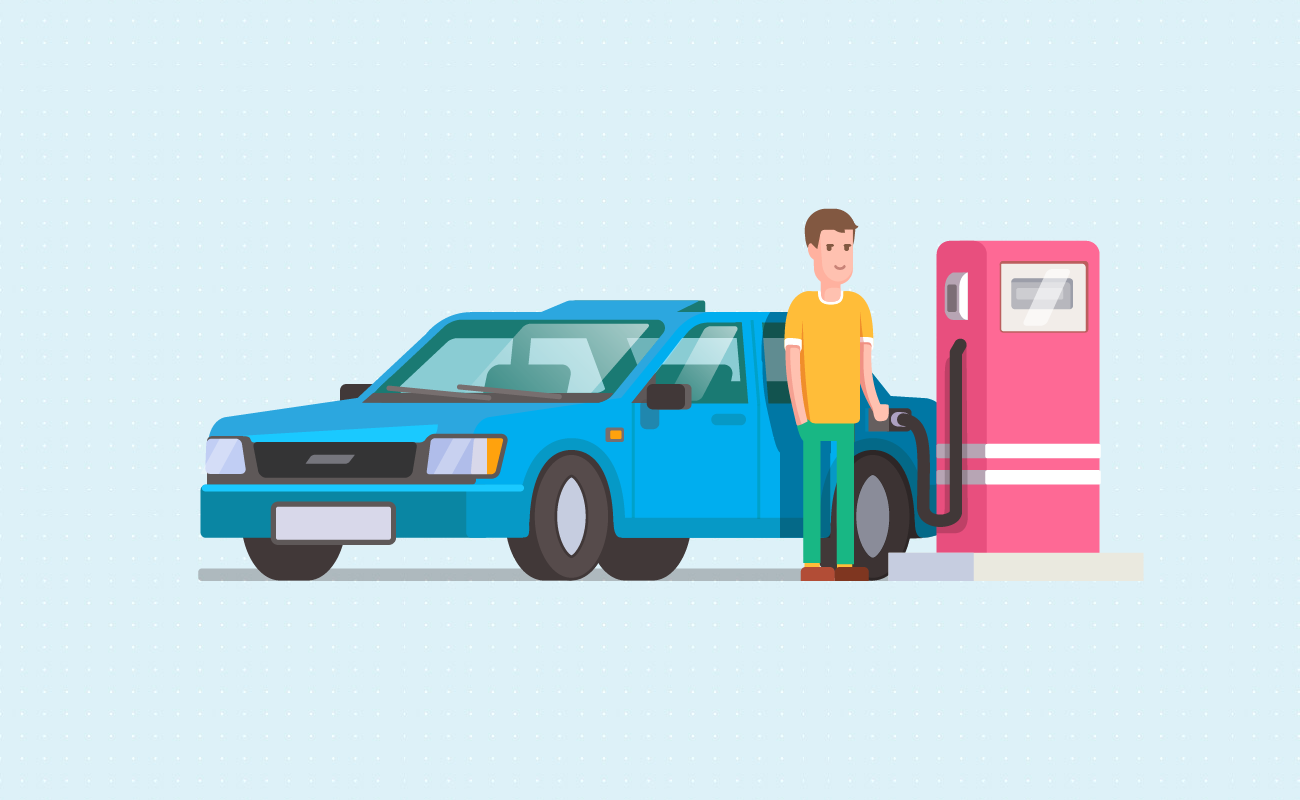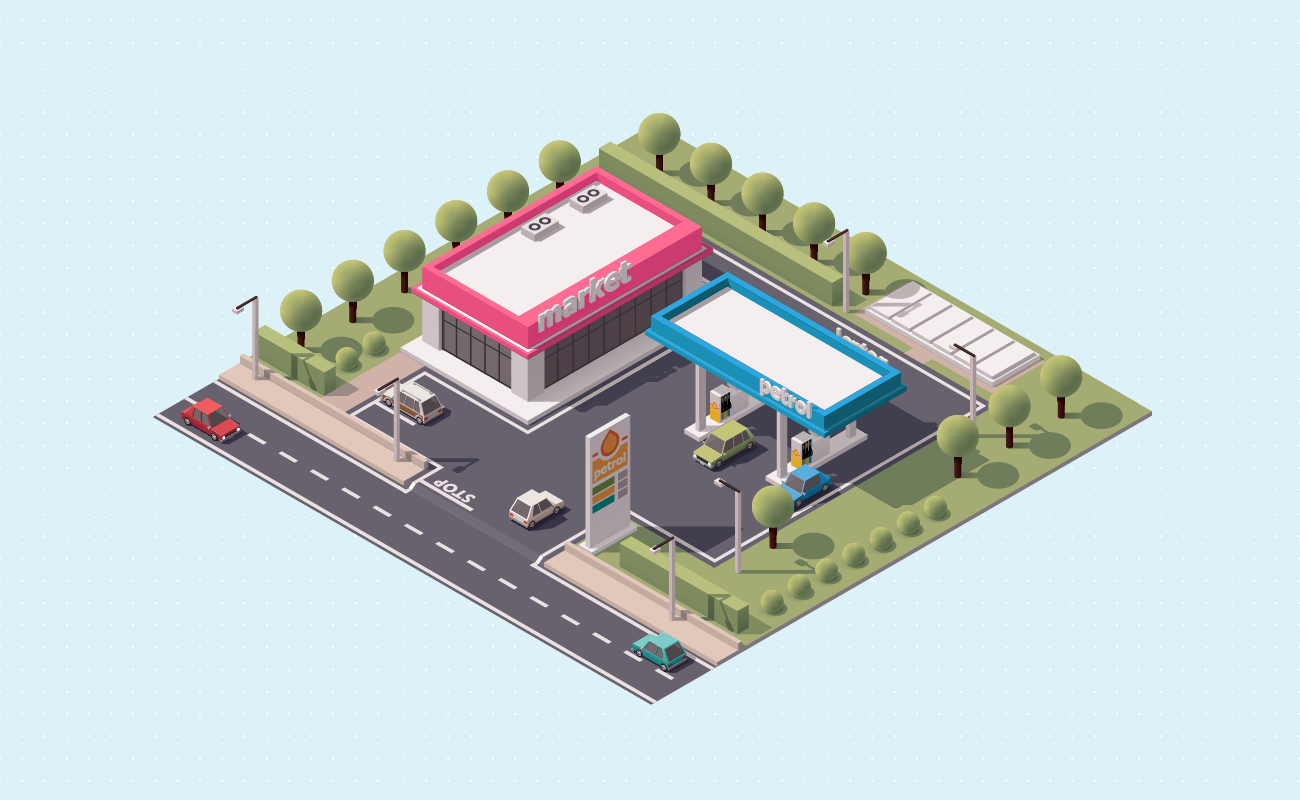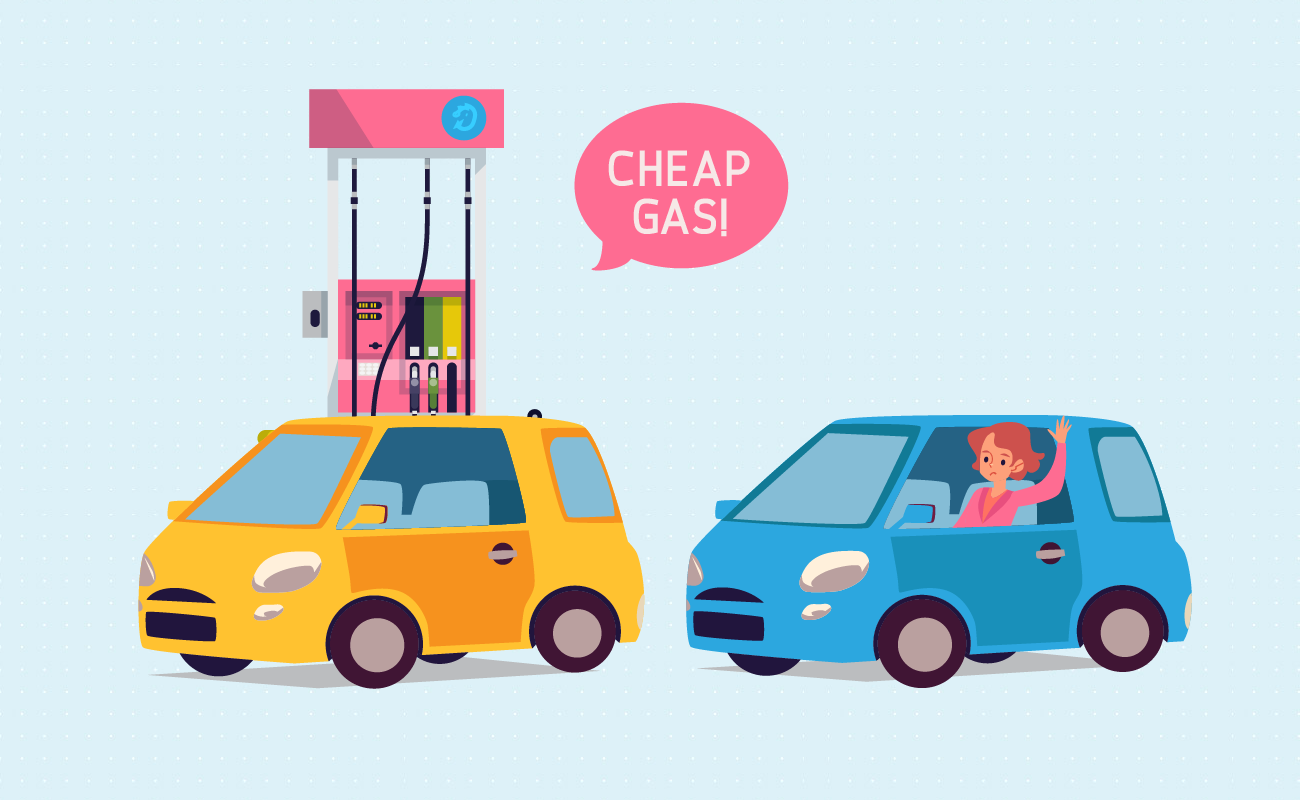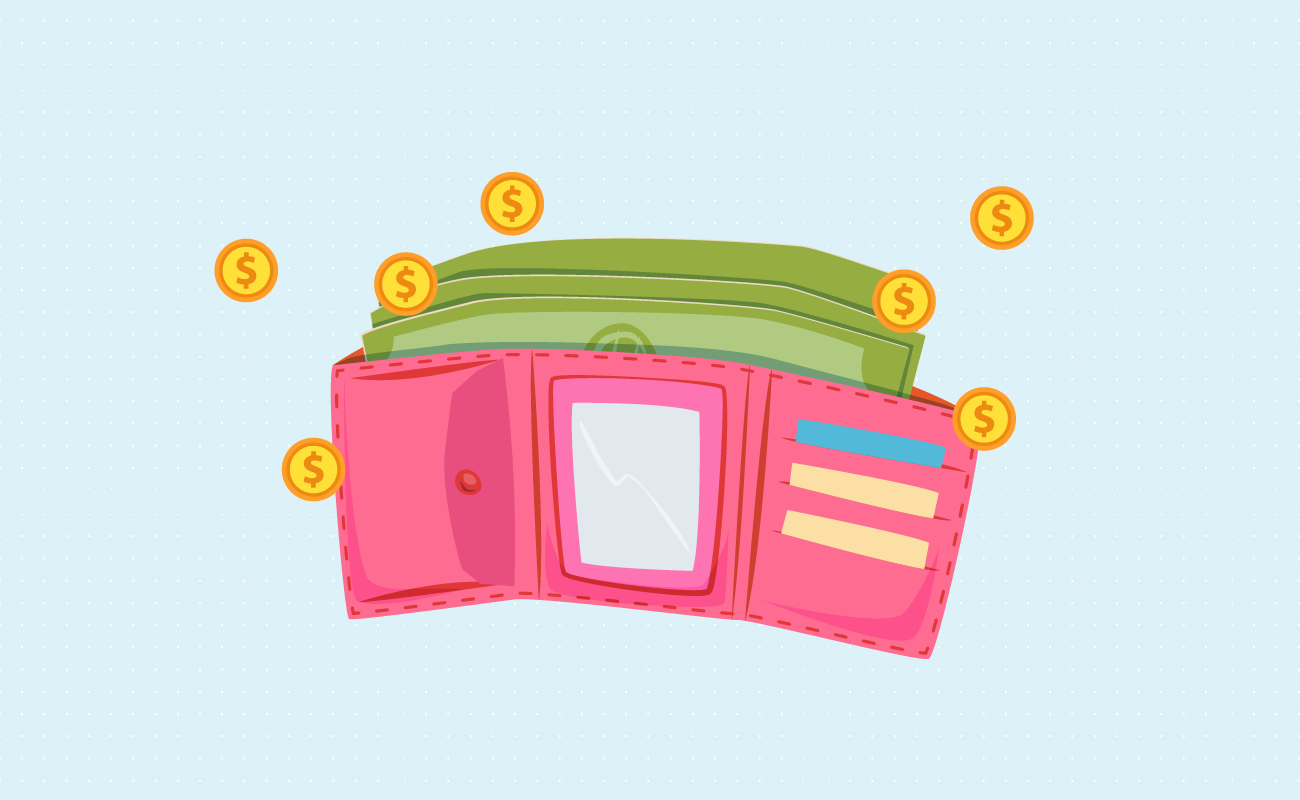Auto Loans
Affordability
Loan Payment Options
Biweekly Payments
Compare Rate & Term
Rebate vs Low Interest
Home Equity Loans
Lease or Buy
 Fuel Cost Savings Calculator
Fuel Cost Savings CalculatorThis calculator will help you to determine whether or not driving the extra miles to a cheaper gas station will actually save you money.
Authored by Jose Abuyuan on June 23, 2020

Fuel is fuel. It all burns the same in the engine. What matters is your engine receives the right octane rating it was designed for. Anything else will burn through your money. As with most things, don’t sweat on the brand names. Often, the only thing that sets branded fuels apart are engine cleaners. And it’s cheaper to buy those in bulk and add it to your fuel tank yourself.
Certainly, cheap gas is good. And if you’re on a long drive, cheaper gas stations might be a budget lifesaver.
That said, fuel isn’t all it’s cracked up to be. Due to the unpredictable nature of supply and demand, fuel often costs more in one area than another. To cope with high local prices, you might’ve considered hunting down the cheapest gas places in your location. Today, finding the cheapest gas stations in an area isn’t hard. There’s an app for everything, including discount fuel.
It does beg the question of whether it’s worth the journey there. In some instances, the brand name station closer to you might just be the better option after all.
America’s motorists have turned their thumbs on pricey fuel. A survey by the Association for Convenience & Fuel Retailing suggests this. They found that 63 percent of American motorists will drive 5 minutes further to pay at least 5 cents less for gas. In parts of the country, news of cheap gas would often attract customers from miles around.
Of course, a difference that minuscule is hardly economical. Indeed, going after small price differences can lead to a net loss. However, larger price differences are far more common. If gasoline markups are tremendous in your area, you could save a lot of money by buying from cheaper gas stations. This, like the money you save by not smoking cigarettes, could add up to a lot of money.

Many motorists often neglect the diminishing marginal returns of searching for cheaper gas. Before the advent of smartphones, you could only rely on word of mouth. You could waste an entire day looking for gas stations that offer a better deal. That could be a lot of mileage which potentially cancels out expected savings. More so if the cheaper station is several miles out of your way.
For frugal motorists, apps like GasBuddy can be a lifesaver. Your phone can help you locate gas stations with the cheapest fuel en route. However, be forewarned. These apps don’t always state if the gas stations are open, and their data is not 100 percent reliable.
Be too picky with your gas stations, and you might find yourself further away from any gas station. This could leave you in a bind where the only options are those with a higher markup.
Today, most gas stations come attached with a convenience store. Often, you might do some of your one-off shopping there instead of the supermarket. Like most things in retail, convenience comes at a price. The markups in convenience stores and dollar stores are hard to notice. And in a pinch they seem reasonable. If you’re only buying one bag of chips or a candy bar, this isn’t a big deal. The markups become clear once you need to buy more of them. All of a sudden, stocking up on snacks at the convenience store seems like a terrible idea.
Ask yourself if this convenience is worth it. For tiny things that you don’t really need often, you might not be saving a lot by going further for cheaper. For consumables you use all the time, it’s much different. Thus, people are encouraged to travel a little further to buy in bulk. Our article on grocery savings explains this further.
Does the same principle apply for the car you’re traveling in, though?
The key element to all this is distance. Cars consume fuel as they travel. Some of the fuel you’ve bought would be consumed from the time you travel. The longer this distance, the less it would make sense to go elsewhere for gas. If your local station’s prices aren’t that high to begin with, that may be cheaper than getting gas elsewhere.
Location also plays a key role in fuel markups. Gas stations in a prime commercial location will charge more for gas. Busy highways, for instance, are notorious for higher prices. Before going on a trip down the open road, it’s best to fuel up on local gas.
Much of the costs associated with fuel prices have little to do with the quality of the fuel itself. Some of these reflect the operating costs of managing a gas station. You’ll need qualified personnel to run the station’s infrastructure. There are impact fees and other costs to pollution from the fuel.
There’s also the cost of maintenance and operations. Banks and credit card companies all get a cut from each electronic transaction. And a clean gas station bathroom wouldn’t come cheap.
The biggest difference, however, is irrelevant to car performance. Octane ratings between premium and regular aside, fuels are similar on a molecular level. Additives are optional and are often overhyped by marketing. Subconscious reasons like familiarity may also contribute to shopping for gas at the same location. Spending a few more cents might be a good trade off for cleaner bathrooms or a gas station crew you trust. A dollar or more for gas with fancy chemicals you could’ve added yourself is not.

Fuel prices can be a complex affair. Everything from local taxes, prevailing prices, and current events add to their costs. Living in remote locations can increase the costs of local fuel far above the median price. The same goes when choosing between gas stations.
You’d think it’s a matter of comparing the difference in fuel costs, and most people do exactly that. After all, even a difference of five cents adds up when you’re filling up the whole tank. This simple approach misses many important factors that may not have crossed your mind. What seems like a good deal at first may be a ripoff in disguise.
Thus, calculating your fuel costs can be mind boggling. When traveling to a nearby gas station, the formula is simple:
Total Cost = Gallons needed x Cost of fuel
Let’s assume a few things for this example. You drive a gasoline-powered car with a fuel mileage of 25 miles per gallon and a tank capacity of 15 gallons. Assuming you work at least 16 miles away from your home, you have a round trip of about 32 miles for your daily commute. The local cost of gasoline in your area is about $2.5 per gallon.
Your commute’s daily cost per gallon is as follows:
Total Cost = (32 miles / 25 miles per gallon) x ($2.5 per gallon)
Total Cost = (1.28 gallons) x ($2.5 per gallon)
Total cost = $3.2 (daily)
You will spend at least $32 on gasoline for every trip. Based on your tank’s capacity, you can last about two weeks on a full tank with 2.2 gallons to spare. That’s a refill capacity of about 12.8 gallons. This equation assumes you only use your car for commuting. If you use it for errands, you could be adding another mile or so to your total.
When calculating the price of cheaper gas elsewhere, you add more variables to the equation. The first variables you add account for distance and price:
Total Cost = [(Gallons needed x Cost of distant fuel) + [(Distance / Fuel mileage)] x [Cost of nearby fuel)]
But wait, there’s more. Few things in personal finance is ever that straightforward. You must also take account the money you stand to lose by driving to a place with cheaper gas. Travel too far away and you could be losing value on your car. You also need to factor in the time you spend driving there. After all, time is money. These are factored into our calculator above.
For our comparison, let us assume the following:
| Local Station (3 mi, 2 minutes) | Cheaper Station 1 (5 mi, 5 minutes) | Cheaper Station 2 (7 mi, 10 minutes) | |
|---|---|---|---|
| Cost of fuel per gallon | $3.25 | $2.50 | $2.10 |
| Cost of fuel | $41.60 | $32.00 | $26.88 |
| Cost of fuel spent on trip filling up | $0.78 | $1.00 | $1.18 |
| Vehicle depreciation on trip | $1.80 | $3.00 | $4.20 |
| Cost of your time | $2.00 | $3.33 | $6.67 |
| Total cost | $45.51 | $39.33 | $38.92 |
Going to the cheaper station five miles away can save you $6.18. Meanwhile, driving further to the station offering the cheapest gas would get you $6.59 in savings. In these examples, we are assuming a higher markup for the nearby station, as is sometimes the case with brand-name fuel. The first cheapest station has savings of 75 cents while the further station has savings of more than a dollar.
Now, let’s assume another gas station has a price difference of 25 cents from the local station. It is also about five minutes away and is a five-mile drive from your home.
| Local Station (3 mi, 2 minutes) | Cheaper station (5 mi, 5 minutes) | |
|---|---|---|
| Cost of fuel per gallon | $3.25 | $3.00 |
| Cost of fuel | $41.60 | $38.40 |
| Cost of fuel spent on trip filling up | $0.78 | $1.20 |
| Vehicle depreciation on trip | $1.80 | $3.00 |
| Cost of your time | $2.00 | $3.33 |
| Total cost | $45.51 | $45.93 |
In this scenario, you would’ve saved more money (about 42 cents) if you filled up at your local gas station.

Compare the prices of the cheaper stations before deciding. Always select the closest station with the highest markdowns. A markdown of more than a dollar nets greater savings.

A lot of other factors can lengthen the time it gets for you to reach the station. This added time can nullify any of the benefits you receive from filling up on cheap gas.
Understand your route. If the gas station isn’t too out of the way from your commute, it might not consume as much fuel that it appears because you’ll be traveling that same distance anyway. If the cheaper gas station is too far out of the way, the extra distance may not be worth it.
How is the traffic to the nearest cheap gas station? Stop-and-go traffic can cause you to drive in wasteful lower gears. A place with high traffic congestion can make the closer location much less worthwhile.
Now let’s assume a station the same distance away offers a slightly lower price to the first cheapest gas station. There’s a catch: It’s in a congestion-prone area. On a bad day, it could take you 12 minutes to navigate. Yikes.
| Local Station (3 mi, 2 minutes) | Cheaper Station 1 (5 mi, 5 minutes) | Cheaper Station 3 (5 mi, 12 minutes) | |
|---|---|---|---|
| Cost of Fuel per Gallon | $3.25 | $2.50 | $2.40 |
| Total Cost of fuel | $41.60 | $32.00 | $30.72 |
| Cost of fuel spent on trip filling up | $0.78 | $1.00 | $0.96 |
| Vehicle depreciation on trip | $1.80 | $3.00 | $3.00 |
| Cost of your time | $2.00 | $3.33 | $8.00 |
| Total cost | $45.32 | $39.33 | $42.68 |
If you take that route, you might only save $2.83. Even with the lowered price, that’s nowhere near the amount you would’ve saved if you took the station with less traffic. It gets worse if you must fall in line. Any savings you get from a cheap station disappears if you’re stuck in a line once you factor in the time you wasted.

Watch for long-term trends. Sure, the most convenient gas station might be cheap today. But will it stay that way? Sometimes, the best way to save on fuel is to choose a gas station whose prices are consistently low.
You can save more money if you drive a vehicle with terrific gas mileage. If you own a gas guzzler, the savings might be nullified by the amount of fuel you burn getting there. Now let’s assume you drove a more fuel-efficient unit that consumes 52 miles per gallon.
| Local Station (3 mi, 2 minutes) | Cheaper Station 1 (5 mi, 5 minutes) | Cheaper Station 2 (7 mi, 10 minutes) | Cheaper Station 3 (5 mi, 12 minutes) | |
|---|---|---|---|---|
| Cost of Fuel per Gallon | $3.25 | $2.50 | $2.10 | $2.40 |
| Cost of fuel | $41.60 | $32.00 | $28.16 | $30.72 |
| Cost of fuel spent on trip filling up | $0.38 | $0.48 | $1.23 | $0.96 |
| Vehicle depreciation on trip | $1.80 | $3.00 | $4.20 | $3.00 |
| Cost of your time | $1.33 | $3.33 | $6.67 | $8.00 |
| Total cost | $45.11 | $38.81 | $38.31 | $42.18 |
| Savings | $6.29 | $6.80 | $2.93 |
In these examples, you can save a few more cents from a fuel-efficient car. This may not seem like much, but it can add up to your savings over the course of a year. Combine this with good driving and maintenance for maximum savings.

Time your trips to the gas station. Even cheaper gas stations can sometimes increase their prices alongside demand. The best time to refuel is on Wednesday, while the worst is on weekends and holidays. Most gas stations also increase their prices at around 10 AM. This is a boon for the early bird.
Pick the best way to pay. Paying in cash isn’t only a good way to cultivate good money habits. It is also a great way to secure discounts. In general, gas stations will charge you less if you pay in cash. Processing electric payments often adds to the markup of fuel. If you must pay in debit or credit, look for gas stations that don’t charge extra for electronic processing.
Gas prices are one part of the fuel cost equation. While you can save a little by buying cheaper fuel, you can save a lot by consuming less fuel. A car with good mileage per gallon can help you save on gas in the long term and shield you from price swings. Schedule your errands so you don’t need to backtrack. Rely on other means of transportation.
Jose Abuyuan is a web content writer, fictionist, and digital artist hailing from Las Piñas City. He is a graduate of Communication and Media Studies at San Beda College Alabang, who took his internship in the weekly news magazine the Philippines Graphic. He has authored works professionally for over a decade.